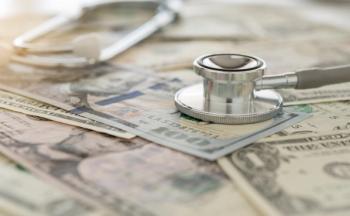
Getting Paid for Medication Management Services
Part 2 of this 3-part series examines pathways to reimbursement for these services.
The mechanics of getting paid for nondispensing services are shrouded in myths and lies. Conventional wisdom says pharmacists have always given away their clinicial, nondispensing services and payers won’t reimburse what they can get for free.
“We have always gotten paid for nondispensing services,” said Troy Trygstad, PhD, PharmD, MBA, executive director of the Community Pharmacy Extended Services Network (CPESN) USA.
“The problem is we have gotten paid through the product margin spread and dispensing fees,” Trygst
ad said. “And because we were getting paid on product margin, our services never became standardized and the adjudication superhighway never developed the way it did for dispensing. We’re changing that.”
Pharmacists have been managing patients with hypertension, asthma, diabetes, heart failure, and other conditions at least since the 1980’s, providing immunizations since the 1990’s and point-of-care testing since the 2000s, and prescribing oral contraceptives and smoking cessation since the 2010s. Generations of pharmacists have integrated durable medical equipment and diabetes education into their stores.
All are reimbursable as medical benefits. Medical claims are typically paid at a higher rate than pharmacy claims, and they are not subject to direct and indirect remuneration clawbacks.
“Vaccines, as just 1 example, can be billed 3 and 4 times higher through medical benefits than through pharmacy benefits,” said Jenny Arnold, PharmD, BCPS, CEO of the Washington State Pharmacists Association.
In this 3-part series,
Total Pharmacy®
explores what it takes to turn your medication management skills into a su
ccessful and profitable pharmacy service.
In part 2, we offer tips on getting paid for medication management services (MMS).
Recognize the Tools
COVID-19 transformed pharmacist and paye
r attitudes, according to Arnold. Scheduling appointments and billing medical benefits for COVID-19 testing and vaccination became standard. Payers, led by the Centers for Medicare and Medicaid Services, acknowledged that pharmacists provide valuable, reimbursable services.
“The 2020 Pharmacy Quality Alliance Industry Trend Report tells us that 70% of healthcare payers would contract with pharmacies today if they could get data and claims in a standardized way,” Trygstad said. “We have the documentation and billing tools to do that in the Pharmacist eCare Plan.”
All 50 states recognize pharmacists as providers, said Rebecca Snead, RPh, executive director of the National Association of State Pharmacy Associations, but payer status does not always translate into payment or scope of practice. Some states reimburse pharmacists directly for Medicaid or other state-run programs. Eight states have payment parity laws that prohibit payers from excluding pharmacists from provider contracts. Elsewhere, pharmacists are building their own paths to payment.
Provider Status
After Ohio recognized pharmacists as providers in 2019, the Ohio Pharmacists Association and Ohio Medicaid launched a pilot program with public and commercial payers.
“Four of our 8 stores were picked because we had a larger population of patients without insurance,” said Andrea Kowalski, PharmD, director of clinical services for Shrivers Pharmacy in Athens, Ohio. “We were responsible for developing and implementing a clinical service, documenting outcomes and submitting claims.”
Shrivers focused on improving behavioral health outcomes for patients taking antidepressant and antianxiety medications. Pharmacists administered standardized tests to assess patient status, counseled patients on interventions such as lifestyle changes and recommended medication adjustments.
In Camden, Ohio, pharmacists started with smoking cessation, opioid and naloxone use, diabetes, and asthma services.
“Those were the conditions of interest to our primary Medicaid payer, CareSource,” said staff pharmacist Penny Nerderman, RPh, Camden Village Pharmacy. “Once you’re accredited, you bill directly for services, just like any other provider.”
Medicaid is no path to riches, but it’s an improvement over losing money on too many scripts.
“Provider status means I get paid for providing the clinical services we’ve all been trained to do,” said Danielle Hubbard, RPh, partner at Franklin Pharmacy in Warren, Ohio. “That makes a huge difference in our bottom line.”
Payment Parity
Washington required commercial payers to pay pharmacists at the same rate as other providers in 2014. Health system and ambulatory care pharmacists soon began billing medical benefits. Independents are catching up.
“I opened Invara Pharmacy + Clinic in 2019 as a hybrid pharmacy/acute care clinic right out of pharmacy school,” said owner Simeon Roth, PharmD, in Sultan, Washington, a small, rural town outside Seattle.
“We help fill the gap in acute care medical services with point-of-care testing, vaccinations, chronic care for diabetes, hypertension, and hyperlipidemia, and treatment for things like herpes, human and animal bites, urinary tract and yeast infections, and a lot more.”
Pharmacists can expect midlevel provider fees similar to those of nurse practitioners, Roth said. Dispensing has a gross margin of about 20%, vs 50% for nondispensing services.
“That’s the same margin I get selling toys,” he said. “And there is no cost of goods sold on services.”
On Their Own
Tripp Logan, PharmD, taps into multiple local, state, and national payers.
“Local pharmacists resonate with local providers, businesses, and employers looking to support their high-risk populations,” said Logan, vice president for SEMO Rx Pharmacies, with 3 stores in southeast Missouri.
SEMO pharmacists are accredited Medicaid providers, but county public health departments can be even more valuable. Public health funds programs such as diabetes self-management education (DSME) but lacks access to patients. Pharmacists have the patients but lack program funding. “We tried DSME 3 times but couldn’t figure out how to financially sustain the service,” Logan said. “Public health has those same programs and struggles to fill them. We’re natural partners.”
Contracting with major players is harder.
“Our 3 pharmacies can’t move the needle for the Blues [Blue Cross and Blue Shield] of Missouri or United Healthcare,” Logan said. “That’s where networks like CPESN help. With more than 3000 pharmacies, CPESN can improve outcomes for any big payer. Being part of the network makes us part of large-scale health plan initiatives with revenue opportunities that we can’t touch on our own.”
Recognize the Potential
Don’t obsess over the oblivious like direct payer billing, advised Sandra Leal, PharmD, MPH, CDCES, executive vice president of SinfoniaRx.
“There are other ways to get compensated,” said Leal, who is also president of the American Pharmacists Association. “Maybe it’s a fee-for-service contract or a per-member-per-month arrangement for specific interventions.”
The reality that pharmacies were often the only health care facilities to remain open during the COVID-19 pandemic was not lost on payers, she added.
“[COVID-19] clearly showed that pharmacists can provide services, document, and bill on the medical side,” said Josh Howland, PharmD, MBA, vice president of clinical strategy for PioneerRx. “That puts your foot in the door. Now it’s time to pull the door open and jump through it."
Newsletter
Pharmacy practice is always changing. Stay ahead of the curve with the Drug Topics newsletter and get the latest drug information, industry trends, and patient care tips.











































































































































































































